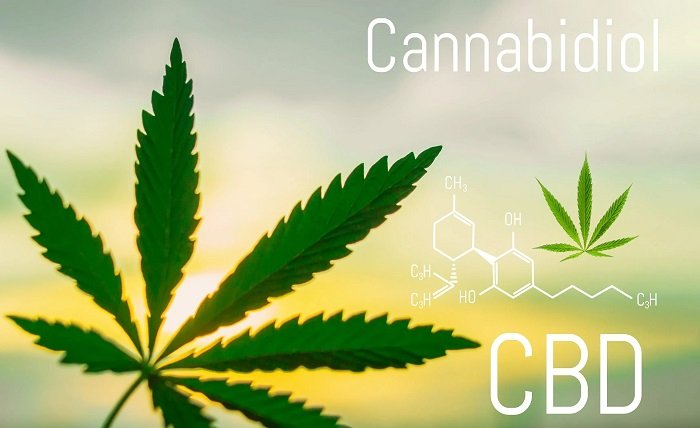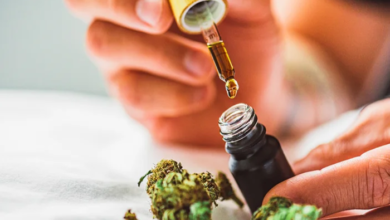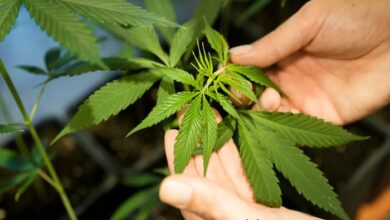CBD: What Is It and How Does It Work?

CBD, or cannabidiol, is a natural compound that has gained popularity in recent years for its potential health benefits. CBD is one of the many cannabinoids, or chemical substances, found in cannabis plants, such as marijuana and hemp. Unlike THC, or tetrahydrocannabinol, the main psychoactive component of cannabis, CBD does not cause a high or intoxication. Instead, CBD may interact with various receptors and enzymes in the body and influence various physiological and psychological processes. In this article, we will explore what CBD is, how it works, what are its benefits and risks, and how to use it safely and effectively.
What Is CBD and Where Does It Come From?
CBD is a cannabinoid that can be extracted from cannabis plants or synthesized in a laboratory. CBD can be found in different parts of the cannabis plant, such as the flowers, leaves, stems, seeds, and roots. However, the highest concentration of CBD is usually found in the resinous trichomes that cover the flowers and buds of the plant.
There are two main types of cannabis plants that are used to produce CBD: marijuana and hemp. Marijuana is a type of cannabis that contains high levels of THC and low levels of CBD. Hemp is a type of cannabis that contains low levels of THC and high levels of CBD. Hemp is also used for industrial purposes, such as making fiber, paper, clothing, and biofuel.
The legal status of CBD depends on the source and the amount of THC it contains. In the United States, hemp-derived CBD products that contain less than 0.3% THC are legal at the federal level, but may still be illegal in some states. Marijuana-derived CBD products that contain more than 0.3% THC are illegal at the federal level, but may be legal in some states where medical or recreational marijuana is allowed.
How Does CBD Work in the Body?
CBD works by interacting with the endocannabinoid system (ECS), a complex network of receptors and molecules that regulates various functions and processes in the body. The ECS is involved in maintaining homeostasis, or balance, in the body. Some of the functions that the ECS influences are:
- pain
- inflammation
- mood
- stress
- sleep
- appetite
- memory
- immune system
- nervous system
- reproductive system
The ECS consists of three main components: endocannabinoids, cannabinoid receptors, and enzymes. Endocannabinoids are molecules that are produced by the body and act as messengers between cells. Cannabinoid receptors are proteins that are located on the surface of cells and receive signals from endocannabinoids or external cannabinoids, such as CBD or THC. Enzymes are molecules that break down endocannabinoids or external cannabinoids after they have completed their function.
There are two main types of cannabinoid receptors: CB1 and CB2. CB1 receptors are mainly found in the brain and central nervous system, while CB2 receptors are mainly found in the immune system and peripheral tissues. THC binds to both CB1 and CB2 receptors and activates them, causing various effects depending on the location and concentration of the receptors. For example, THC can cause euphoria, relaxation, pain relief, appetite stimulation, memory impairment, or anxiety by activating CB1 receptors in different regions of the brain.
CBD does not bind directly to CB1 or CB2 receptors but rather modulates their activity by influencing how they interact with other cannabinoids or molecules. For example, CBD can prevent THC from binding to CB1 receptors and reduce its psychoactive effects. CBD can also enhance the activity of endocannabinoids by inhibiting their breakdown by enzymes or increasing their availability by stimulating their production.
By interacting with the ECS in different ways, CBD may have various effects on different functions and processes in the body.
What Are the Benefits and Risks of CBD?
CBD has been studied for its potential therapeutic effects on various conditions and symptoms. Some of the evidence-based benefits of CBD are:
- Epilepsy: CBD has been shown to reduce the frequency and severity of seizures in children and adults with rare forms of epilepsy that are resistant to conventional treatments. The FDA has approved a prescription drug called Epidiolex that contains purified CBD for treating these conditions.
- Anxiety: CBD has been shown to reduce anxiety symptoms in people with various anxiety disorders. CBD may work by affecting serotonin receptors in the brain that regulate mood and stress.
- Pain: CBD has been shown to reduce pain and inflammation in people with chronic pain conditions. CBD may work by affecting TRPV1 receptors in the body that regulate pain perception and temperature.
- Sleep: CBD has been shown to improve sleep quality and duration in people with insomnia. CBD may work by affecting adenosine receptors in the brain that regulate sleep and wake cycles.
However, CBD also has some potential risks and side effects that should be considered before using it. Some of the possible risks and side effects of CBD are:
- Drug interactions: CBD may interact with other medications or supplements that you are taking and affect their effectiveness or safety. CBD may work by affecting cytochrome P450 enzymes in the liver that metabolize drugs. Some of the drugs that may interact with CBD are blood thinners, antidepressants, anticonvulsants, and opioids. You should consult your doctor before using CBD if you are taking any medication or supplement.
- Liver damage: CBD may cause liver damage or injury in some people, especially at high doses or in combination with other drugs. CBD may work by increasing the levels of liver enzymes that indicate liver inflammation or damage. You should monitor your liver function tests and avoid using CBD if you have liver disease or history of liver problems.
- Drowsiness: CBD may cause drowsiness or sedation in some people, especially at high doses or in combination with other sedatives. CBD may work by affecting GABA receptors in the brain that regulate relaxation and sleep. You should avoid driving or operating machinery while using CBD or reduce your dose if you experience drowsiness.
- Dry mouth: CBD may cause dry mouth or xerostomia in some people. CBD may work by affecting salivary glands that produce saliva. You should drink plenty of water or use artificial saliva products while using CBD or reduce your dose if you experience dry mouth.
- Diarrhea: CBD may cause diarrhea or loose stools in some people, especially at high doses or in combination with other laxatives. CBD may work by affecting intestinal motility and secretion. You should eat a balanced diet or use anti-diarrheal products while using CBD or reduce your dose if you experience diarrhea.
How to Use CBD Safely and Effectively?
CBD is available in various forms and products, such as oils, tinctures, capsules, gummies, creams, balms, vapes, and sprays. Each form and product may have different concentrations, dosages, onset times, durations, and bioavailabilities of CBD. Therefore, it is important to choose the right form and product for your needs and preferences.
Some of the factors that you should consider when choosing a CBD product are:
- Quality: You should look for a reputable and trustworthy brand that provides third-party lab testing results for their products. These results can verify the purity, potency, safety, and consistency of the products. You should also look for a product that uses organic hemp, CO2 extraction method, and natural ingredients.
- Purpose: You should choose a product that suits your purpose and condition. For example, if you want to use CBD for pain relief, you may prefer a topical product that can be applied directly to the affected area. If you want to use CBD for anxiety relief, you may prefer an oral product that can be ingested easily and discreetly.
- Dosage: You should start with a low dose of CBD and gradually increase it until you find the optimal dose for your desired effects. The dose of CBD may vary depending on your weight, metabolism, tolerance, condition, and product. A general guideline is to take 1 to 6 mg of CBD per 10 pounds of body weight. However, you should always follow the instructions on the product label or consult your doctor before using CBD.
- Timing: You should time your use of CBD according to your needs and goals. For example, if you want to use CBD for sleep improvement, you may take it 30 to 60 minutes before bedtime. If you want to use CBD for seizure prevention, you may take it regularly at fixed intervals throughout the day.
Conclusion
CBD is a natural compound that can interact with the endocannabinoid system in the body and influence various functions and processes. CBD has been shown to have potential benefits for various conditions and symptoms, such as epilepsy, anxiety, pain, and sleep. However, CBD also has some potential risks and side effects that should be considered before using it. Therefore, it is important to use CBD safely and effectively by choosing the right product, dosage, timing, and quality. You should also consult your doctor before using CBD if you have any medical condition or take any medication or supplement.




